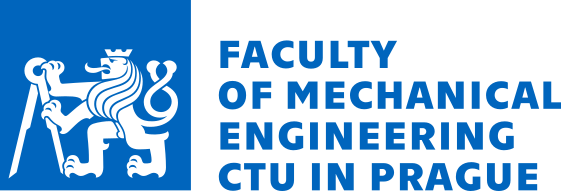User: unknown || Login || NEWS: PSD data, WCFA2024, W2TFP records, FABER funded!


Fatigue Databases
- Acknowledgement
- Origin: Why Was FatLim Formed? (By Jan Papuga)
- Next development
- Database of references
- Database of materials
- FatLim database
- FinLiv database
- Job File - tool for verification
Acknowledgement
The original development of this internet database proceed with financial help from Czech Science Foundation (Project GACR 101/07/P350). This help is gratefully acknowledged.
The next conversion, transfer and elaboration of the fatigue databases to the new FADOFF website was partially financed by Technology Agency of the Czech Republic within TA01011274 project.
Origin: Why Was FatLim Formed? (By Jan Papuga)
The conception was born in my mind, when I wrote my PhD thesis. I had a serious problem then - I calculated fatigue prediction for more than ten multiaxial fatigue methods on 129 experimental results. This formed a huge heap of data, which I had to process.
But, first, I doubted if all the experimental data are correct. I used secondary sources and was unable to find e.g. the original papers by Nishihara & Kawamoto. I had to believe, that the secondary references are right and that there are no reproduction errors. As I found later, there are many of them.
Second, I had to process the data as regards statistic properties of different formed group of experiments with similar loadings. I used to save the results to Excel and subsequently formed a relatively efficient procedure how to add new experimental results to the present data group. But now I get near to 400 experimental results and Excel is giving it up. This is the right time to switch to another way of data manipulation.
Third, although I would like, it is nearly impossible to report in detail on achieved prediction results. I believe, that the scientist should analyse his results and give some conclusion to his analysis. But he also should allow to others to check his detailed results or even browse over them in a search for their own goals. Under current circumstances, I am not able to reproduce full details of my work to any scientific paper. But I can't stand those papers which show only overall sums of results.
Fourth at last:
It is fairly traditional that each author develops his own criterion for fatigue life prediction and verifies it by his own experimental data. Then some other author's data are not satisfied by that criterion, and a new one is suggested. Thus too many proposed criteria have been accumulated, and this testifies, in fact, against the approach of reduction. Many criteria have remained isolated each from other, without comparison or competition.
reproduced from S. Stefanov, Int J Fatigue 1996
Well, if I have a tool in my hands, which allows me to do fast computations over many different load regimes and experiments, should not I try to overcome this fractionalism? And if I got some results, should not I allow anybody to see it?
I have to agree with Stefan Stefanov. There are still newer and newer multiaxial methods, but the experimental results on which they are tested are very mild. We should begin to map the current situation as regards existing computational methods - and the databases here are the very start of this process. I think, there are still other experimental results, which can broaden these databases.
Next development
After several years of unsuccessful attempts in extending the scope of data by me and false hopes in the help of the users, I succeeded in establishing a consortium financed by Technology Agency of the Czech Republic and focused on elaborating PragTic and the databases. The project called FADOFF led to a complete redesign of the database system and its transfer to the new web space www.fadoff.cz. If you are new here, it is recommended to switch to that website.
Because the older database system can be linked to in various older references, it is kept here with following links. Individual items are commented in order to explain changes when upgrading to www.fadoff.cz and reasons for them.
Database of references
Every database item (set of material properties, fatigue experiments) in the system has to be linked to the text, where it appeared for first. It has two reasons - first to allow the user to track back and check that the data here are OK, while second, not to disturb the authors right in any way. The reference database here is not any more extended, and contains only information gathered until the end of 2013.
If you want to get to this older closed system, click the button here:
Database of materials
This database was my first attempt in MySQL and PhP. Over those many years, it was left as you can find it below, i.e. with a very poor search engine. As I tried to extend the more complex system on data of fatigue experiments, the development here got frozen, which made the database hard to be used. New entries cannot be added here any more starting from the end of 2013.
If you want to get to this older closed system, click the button here:
FatLim database
FatLim database was organized in order to provide a unique reference point on data usable for verifying various multiaxial fatigue criteria related to fatigue limit evaluation. Over those years, I developed two various interface. The older one stayed more functional, because it allowed to check also the results of fatigue limit estimation realized on given data items. You can find it here:
The second attempt was built on the extended FinLiv database system. The extension (see below) brought along so extensive elaboration, that it never got finished. This system thus provides only information about the experimental inputs, no verification outputs are available. To test it, you should follow this link:
Both systems are closed and can be extended in a very cumbersome way only. The FADOFF project was focused on the complex FinLiv database, so this kind of a simple access has not been implemented there yet. Note please, that FADOFF activity showed that many experimental inputs covered in these older databases are of a problematic nature. Data gathered in FinLiv database (see below) are more reliable.
FinLiv database
When FatLim (see above) was finished, I started to find it too limited - it covered just fatigue limits and fatigue limit estimation methods. FinLiv was planned to be an extension allowing us to work only with limited lifetime data, notched specimens, etc. The development was anyhow too hard just for me. FinLiv was prepared, but was so complex, that even I had problem to feed it by data. The database was never really substantially used. You can see the outcome here:
Job File - tool for verification
FatLim database provided a description of a vast set of experimental data obtained on smooth unnotched specimens loaded multiaxially close to fatigue limit conditions. Job FIle was a tool, how to show that PragTic can realize the computation over whole set by any implemented method for fatigue limit estimation. It is an artificial model prepared for analysis in PragTic that gathers all material and load data. Opening in PragTic allows the users to analyze the quality of different implemented methods. You can find the Job FIle and the description, how it works, here:
This model is based solely on data gathered in the FatLim database above. It uses data format usable for PragTIc, so it cannot be used for testing any other fatigue solver. During duration of the initial FADOFF project, we prepared another application - Dummy Model. It can be imported to any fatigue solver, prepared for computation and analyzed, thus giving the user a good undestanding of fatigue limit estimation models it uses.






































